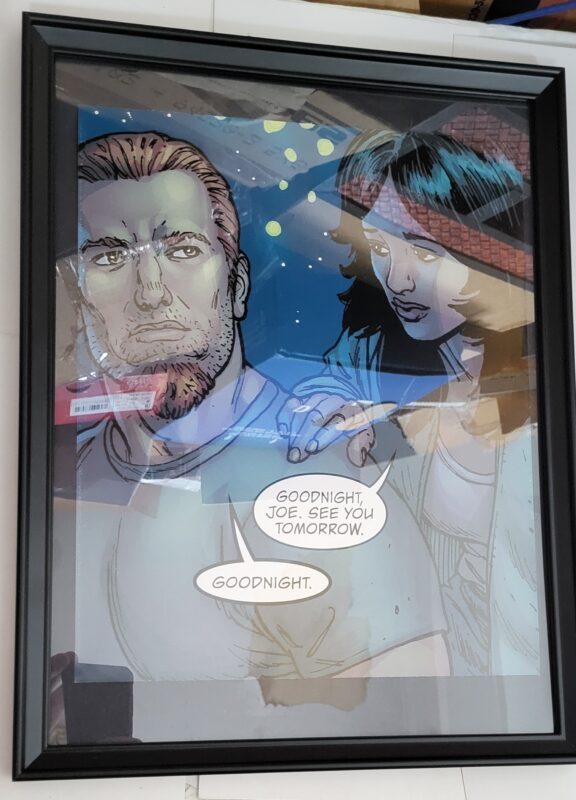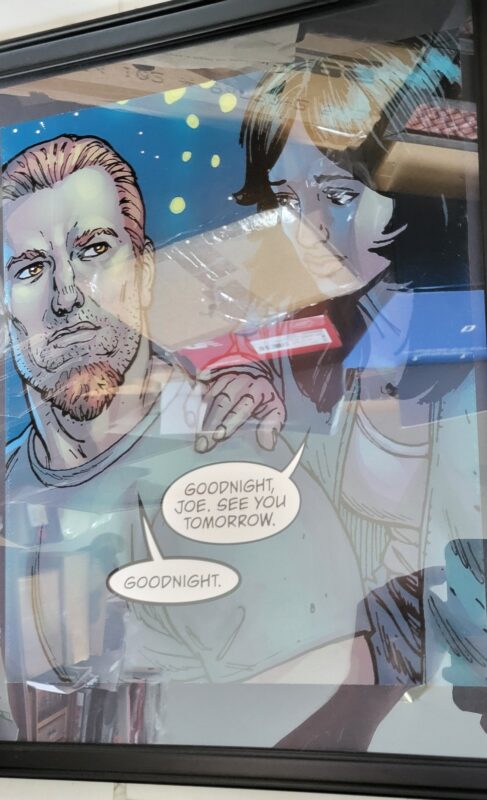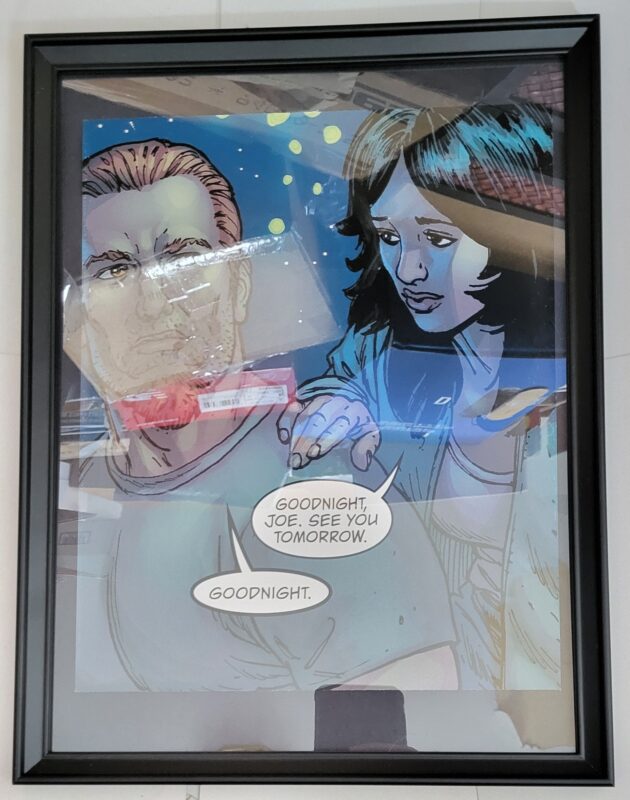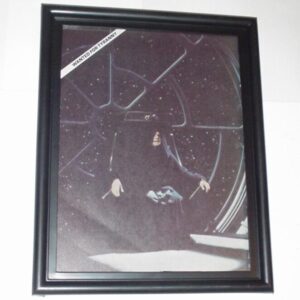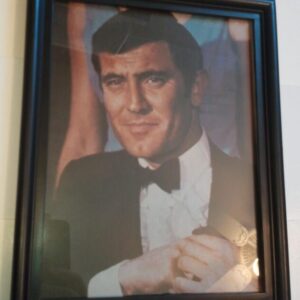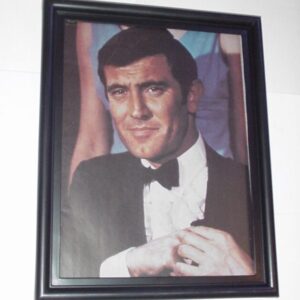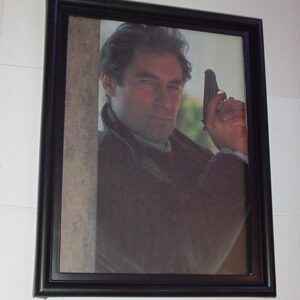Sandman Pin-up #101 FRAMED Destruction on the Peninsula by Glenn Fabry
$99.99
Description
Frame is brand new and shrinkwrapped until time of sale. Ships boxed with packing peanuts. Email with questions before purchase. FRAMED POSTERS MAKE A GREAT GIFT!!!
The Sandman is a British-American comic book series written by Neil Gaiman and published by DC Comics. Artists include Sam Kieth, Mike Dringenberg, Jill Thompson, Shawn McManus, Marc Hempel and Michael Zulli, lettering by Todd Klein, and covers by Dave McKean. Beginning with issue #47, it was placed under the imprint Vertigo. It tells the story of Dream (of the Endless), who rules over the world of dreams. It ran for 75 issues from January 1989 until March 1996, with Gaiman’s contract stipulating that the series would end when he left it.
The main character of The Sandman is Dream, also known as Morpheus and other names, who is one of the seven Endless. The other Endless are Destiny, Death, Desire, Despair, Delirium who was once Delight, and Destruction who turned his back on his duties. Each of the brothers and sisters inhabit and are the anthropomorphic personifications of their concepts. The Sandman is a story about stories and how Morpheus, the Lord of Dreams, is captured and subsequently learns that sometimes change is inevitable.
The Sandman was one of Vertigo’s flagship titles, and is available as a series of ten trade paperbacks. Critically acclaimed, The Sandman was one of the first few graphic novels ever to be on the New York Times Best Seller list, along with Maus, Watchmen and The Dark Knight Returns. It was one of five graphic novels to make Entertainment Weekly’s “100 best reads from 1983 to 2008”, ranking at 46. Norman Mailer described the series as “a comic strip for intellectuals.”
In a Q&A panel at Comic-Con 2007, Gaiman remarked, “I’d rather see no Sandman movie made than a bad Sandman movie. But I feel like the time for a Sandman movie is coming soon. We need someone who has the same obsession with the source material as Peter Jackson had with Lord of the Rings or Sam Raimi had with Spider-Man.”. That same year, he also stated that he could imagine Terry Gilliam as a director for the adaptation : “I would always give anything to Terry Gilliam, forever, so if Terry Gilliam ever wants to do Sandman then as far as I’m concerned Terry Gilliam should do Sandman…” In 2013, DC Chief Diane Nelson says that a Sandman film will be as rich as the Harry Potter universe. It has been announced that David S. Goyer will be producing an adaptation of the graphic novel, alongside Joseph Gordon-Levitt and Neil Gaiman. Jack Thorne has been hired to write the script. It was announced that the film will be out in Christmas 2016.
The Sandman’s main character is Dream, the Lord of Dreams (also known, to various characters throughout the series, as Morpheus, Oneiros, the Shaper, the Shaper of Form, Lord of the Dreaming, the Dream King, Dream-Sneak, Dream Cat, Murphy, Kai’ckul, and Lord L’Zoril), who is essentially the anthropomorphic personification of dreams.Destruction is the fourth eldest of the Endless, and is depicted as a big, red-haired, bearded man (somewhat resembling actor Brian Blessed; Gaiman has mentioned that he would like Blessed to play Destruction in the event of a Sandman movie). He is also known as Olethros. In appearances set in earlier centuries, he is depicted wearing military gear (such as a musketeer’s uniform, or plate armour), though in more recent times he is shown in colourful clothes with no particular theme. When Delirium and Morpheus encounter him in the seventh collection of issues in the series, Brief Lives, he has taken to wearing his hair in a ponytail, and owns a talking dog, Barnabas. Since he abandoned his responsibilities there is no sigil in the galleries for him, though he keeps his own gallery (wherein is a sword, his sigil). His realm is not portrayed in the series.
Destruction abandoned his realm and his responsibilities some time around the turn of the seventeenth century. The reason for this was the onset of the human Age of Reason, which would eventually culminate in the invention of the atomic bomb. Destruction was unwilling to be responsible for the destruction this would cause, and therefore left the family. He did not cease to exist as the active aspect of Destruction, he simply stopped directing the affairs over which he has control. As he says, destruction did not stop, it was merely no longer his fault. This is shown in the Lucifer character Fenrir, who is described as the act of destruction itself; though not said, it has been postulated that this is the manifestation of Destruction’s realm. Destruction features most prominently in Brief Lives, in which his siblings Morpheus and Delirium set out to track him down. When they finally meet they do not exactly argue but talk at cross-purposes; Destruction’s choice of path baffles and to some degree infuriates Morpheus, while Destruction finds it hard to comprehend Morpheus’ position and concentrates on trying to impart to him some wisdom on the necessity of change and self-knowledge. Delirium just wants her brother back; she is reliant on her siblings for support, particularly her elder brothers. In the end, Destruction simply leaves, packing his sword into a bindle, stepping into the sky and vanishing.
Destruction is self-obsessed in the most positive sense of that term; after giving up his responsibilities he concentrates instead on attempting to learn about his own nature and exert control over it. This is manifested in his deliberate attempt to subvert his own essential nature and create instead of destroy; he is shown at various points writing indifferent poetry, painting an indifferent picture, cooking a meal left untouched by those for whom it was intended, and brewing Greek coffee which Delirium fails to drink properly. Several characters refer to him as being a horrible artist. It’s likely that Destruction is inspired by Death’s suggestion that everyone can know everything. He tells Dream in Brief Lives that each Endless is really a lord of opposites: life and death, dreams and reality, destruction and creation, destiny and freedom, etc.
As an aspect of change, Destruction also foreshadows the eventual downfall and replacement of his brother Dream in this interaction. It was Destruction, in fact, who told Orpheus that Death had a way for him to visit the Underworld, which set off the chain of events leading to Dream’s end.Glenn Fabry is an Eisner Award-winning British comics artist known for his detailed, realistic work in both ink and painted colour.
